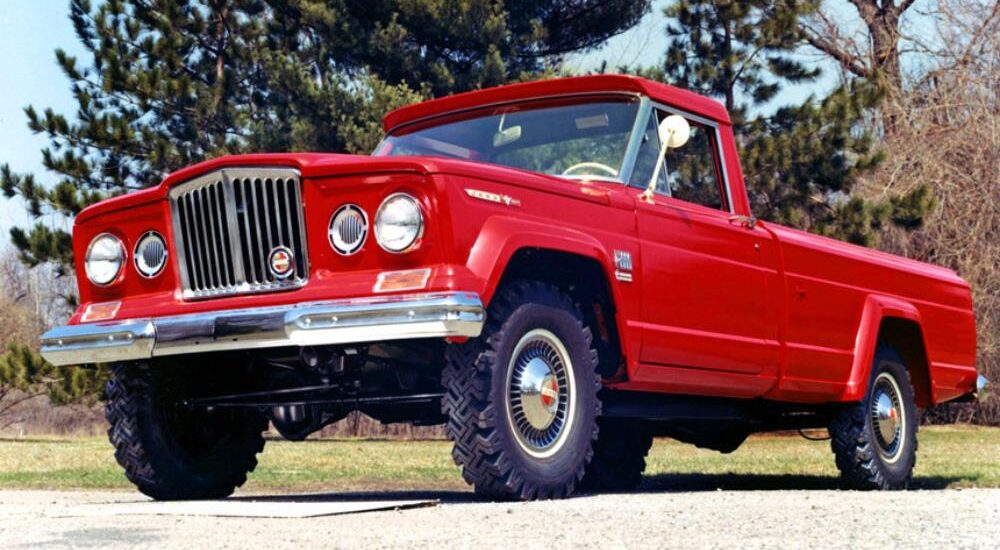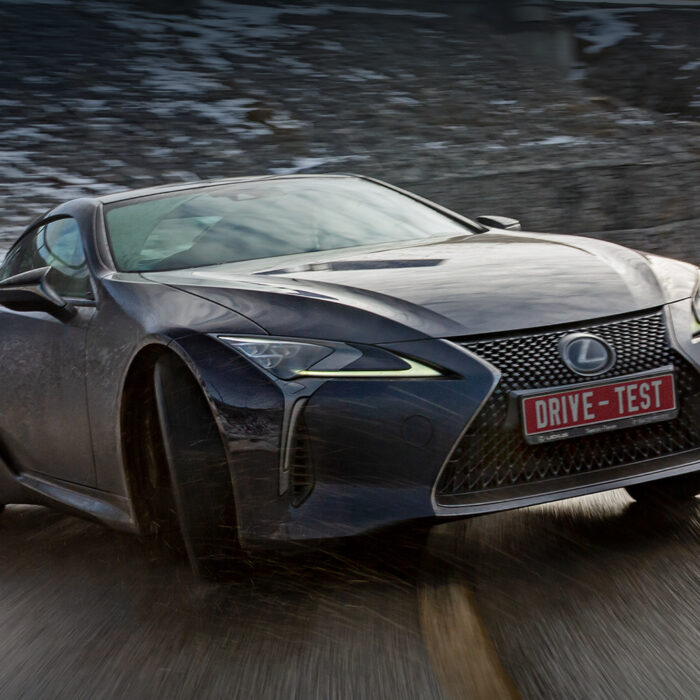The combination of “Jeep” and “pickup” may sound like an innovation today, with the upcoming truck based on the Jeep Wrangler SUV heralded as a leap into a new class. However, this venture is, in fact, a return to old traditions from which the Jeep brand strayed only a quarter of a century ago, for entirely understandable reasons. From 1947 to 1992, pickups were a regular part of its production lineup.
The production of pickups under the Willys Jeep double brand began just two years after the launch of the first “civilian Jeep” in 1945. Developed alongside the Willys Jeep Station Wagon, the vehicle bore the simple name Willys Jeep Truck. Notably, the professional designer Brooks Stevens contributed to the appearance of this duo. Despite sharing components with the Willys-Overland CJ-2A SUV, such as the engine, the pickup and the wagon had distinct features, including different fenders and even unique stampings on the doors.

Willys Jeep Truck
The pickup, following the norm of the time for most American passenger cars, featured a body-on-frame construction and boasted the longest wheelbase in the family: 2997 mm compared to the universal’s 2642 mm and the base Jeep’s 2032 mm. Initially equipped with an all-metal cabin and the standard four-cylinder Go-Devil engine (2.2 liters, 60 hp), the truck offered rear or all-wheel drive and could carry a one-ton payload.

Willys Jeep Truck
In 1950, both the pickup and the universal received a new V-shaped front end design, alongside the introduction of a lightweight truck with a half-ton payload. Furthermore, from 1954, inline six-cylinder engines ranging from 3.7 to 3.8 liters were available as options. This iteration of the pickup remained in production until 1965, with a total production exceeding 200 thousand units.
The subsequent pickup, the Jeep Gladiator, boasted an impressive production run of over 26 years. Launched in 1962 alongside the civilian SUV Jeep Wagoneer, both models were designed by the renowned Brooks Stevens.

Jeep Gladiator
The Gladiator introduced numerous innovations to the pickup segment. It was the first to offer options such as an automatic transmission, power brakes, and power steering. Additionally, some of the lighter versions featured independent front suspension, although this was short-lived due to reliability issues.
Jeep Gladiator pickups featured a body-on-frame construction, offered in three wheelbase sizes, and could be configured with rear or all-wheel drive. However, the cabin was limited to a two-seater configuration, and initially, the only engine available was the overhead inline six-cylinder Tornado (3.8 liters, 142 hp). In 1965, Kaiser Jeep adopted AMC engines, including similar inline-sixes and V8 engines (5.4 liters, 253 hp).

Jeep J4000
Despite undergoing a series of rebranding exercises, including name changes to J2000 and J4000, and later J10 and J20, the pickups continued to evolve alongside the passenger Wagoneer. Notable upgrades included changes to the front end and interior design, the introduction of new engines, and the adoption of a full-time four-wheel-drive system in 1983.

Jeep J10

Jeep J20
From 1981 to 1985, the production program also included the Jeep CJ-10 pickup with a gross weight of up to three tons, which combined the frame and chassis from the J10 model with the cabin and elements of the exterior from the classic CJ-7 SUV. These cars were produced in the USA and Mexico, but were mainly exported, primarily to Australia. The specifics of the target markets implied inexpensive units, so – no V8s under the hood. Jeep CJ-10 was offered with AMC gasoline engines (four or six cylinders), as well as with a straight-six diesel engine from Nissan with a volume of 3.2 liters. Production of these pickups was discontinued after a jump in the Australian dollar, which made imported cars unreasonably expensive.

Jeep CJ-10
In 1988, production of the J-series pickups ceased, while the Wagoneer (now Grand) continued for another three years. The premature retirement of the pickup was largely influenced by Chrysler’s acquisition of AMC in 1987, with the more modern Dodge Ram serving as the focal point in Chrysler’s full-size pickup segment.

In addition to full-size pickups, Jeep also dabbled in lighter trucks. The Jeepster Commando family, introduced in 1966, included a pickup variant with a two-seater cabin. Despite sharing a body with other Jeepster Commando versions, these pickups failed to gain traction in the market, with only 57 thousand units produced by 1971. These vehicles were offered with engines of 2.2 (75 hp) or V6 3.7 (160 hp) and could carry only 450 kg.


In 1972, the AMC, the new owners of the Jeep brand, made a pivotal decision to reintroduce the junior model as the Jeep Commando. These off-road vehicles sported a fresh, uncharacteristic front end design for Jeeps, along with revamped interiors and a revised engine lineup, featuring inline-six engines of 3.8 and 4.2 liters (100 and 110 hp, respectively), in addition to a potent five-liter V8 (210 hp). Despite these upgrades, demand remained stagnant: over a span of two years, only 20 thousand Commandos found buyers, leading to the discontinuation of production in 1973.

Jeep Commando
The concept resurfaced in 1981 with the unveiling of the Jeep CJ-8, an elongated version of the CJ-7 model boasting a stretched wheelbase (2630 mm compared to 2370 mm) and an extended rear overhang. While the standard configuration mirrored its donor model, featuring a single open cabin with the option to add additional benches for passengers behind the front seats, a full-fledged pickup truck variant with a cargo bed separated from the two-seater cabin by a metal partition was also introduced.


Even in its pickup truck guise, the Jeep CJ-8 offered the flexibility of both hard and soft top cabin options. Available engines included gasoline options ranging from 2.5 (93 hp) to 4.2 (114 hp) liters, as well as Isuzu 2.4 diesel engines (66 hp). However, these four-wheel-drive vehicles had a modest cargo capacity of only 400 kg, leading to limited popularity of the base models. Buyers gravitated towards the stylish Scrambler trim, featuring large wheels, body decals, and other enhancements, solidifying the CJ-8’s association with the Scrambler moniker. Despite its appeal, demand remained tepid, with just 28 thousand units sold across all configurations over a five-year period.
The American compact pickup truck market was on the rise during this period, prompting AMC to reassess their truck concept. This led to the development of a new model based on the then-fresh 1983 Jeep Cherokee off-roader, resulting in the debut of the Jeep Comanche pickup truck in 1985, named after a Native American tribe, much like its base model.

While the Cherokee boasted a unibody construction, the Comanche featured a semi-frame design, with a unibody front end and a rear frame onto which the cargo compartment was mounted. The base version of the pickup truck boasted a payload capacity of 635 kg, which could be augmented to one ton with a factory suspension reinforcement package. Engine options ranged from four to six cylinders (2.1 to 4.0 liters), with choices of full or rear-wheel drive and manual or automatic transmissions, though the cabin was strictly two-seater.

The Comanche enjoyed a promising start, with 29 thousand units sold in 1985 and a peak demand of 43 thousand in 1987. However, subsequent years saw a sharp decline in demand, prompting dealers to urge Chrysler to discontinue the model, leaving only the Dodge Dakota as the sole compact pickup truck in their lineup. This request was granted in the summer of 1992, with a total production of 190 thousand Comanches. Following this, the exclusive right to produce pickup trucks within the Chrysler corporation was retained solely by the Dodge brand.
Twelve years later, a reevaluation of this policy was initiated, envisioning heavy-duty pickups and workhorses under Dodge (later Ram), while a stylish pickup truck for active leisure would befit the Jeep brand. To assess market reception, the Jeep Gladiator concept made its debut at the Detroit Auto Show in January 2005, based on the Wrangler.

Concept of Jeep Gladiator (2005)
However, despite intermittent revisitations, including various concept designs inspired by the old Gladiator the market remained void of a production Jeep pickup truck for the next 13 years.

2007: Jeep Wrangler JT
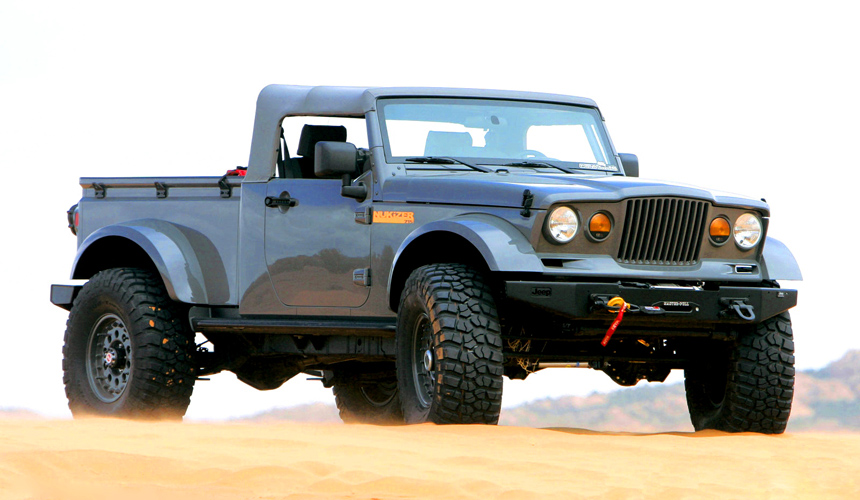
2010: Jeep Nukizer 715
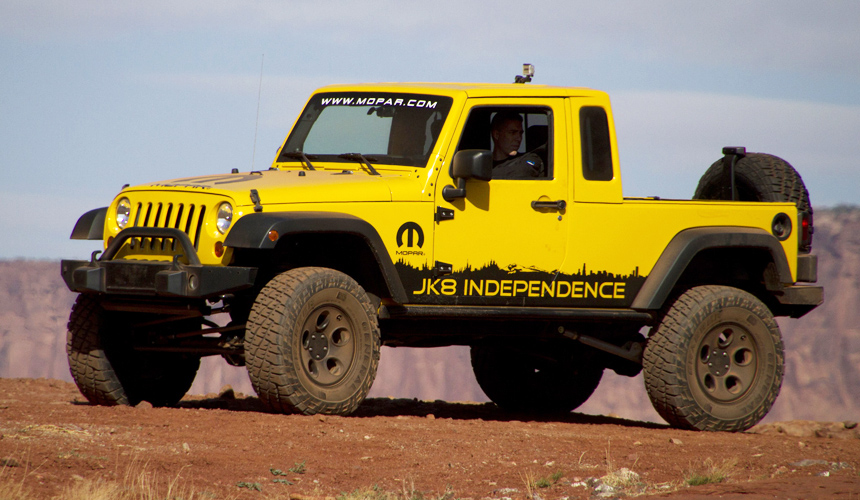
2011: Jeep Wrangler JK-8 Independence

2012: Jeep J12
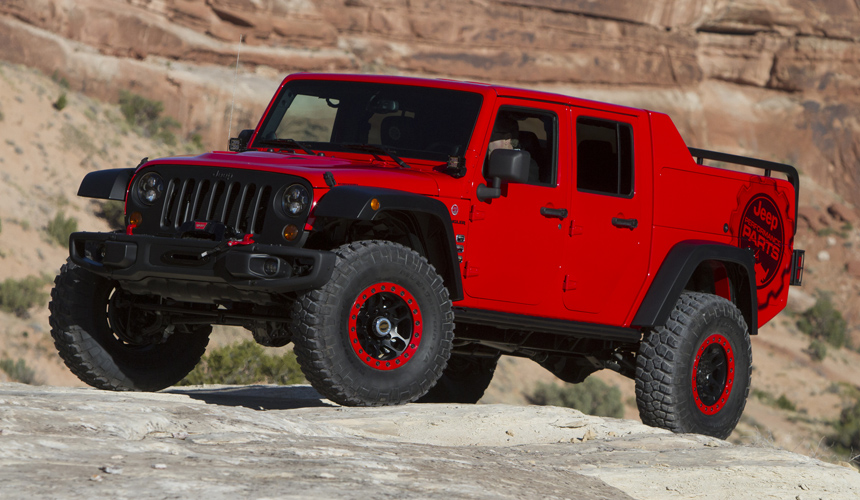
2015: Jeep Wrangler Red Rock Responder
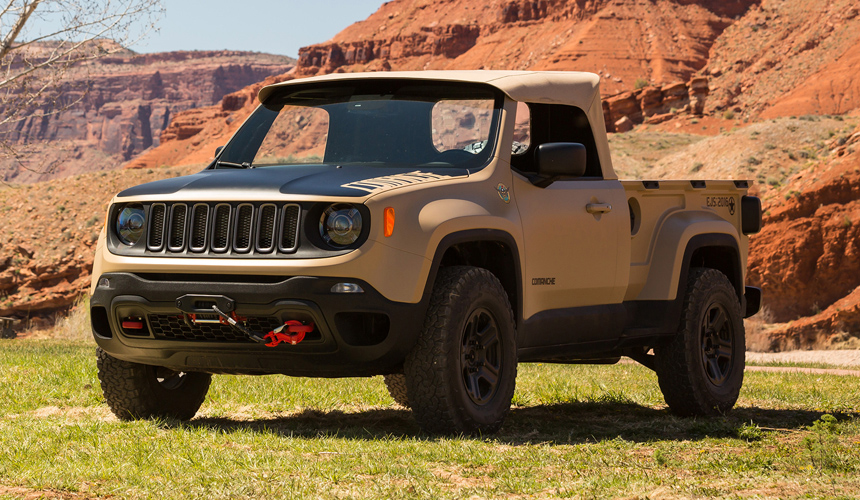
2016: Jeep Comanche
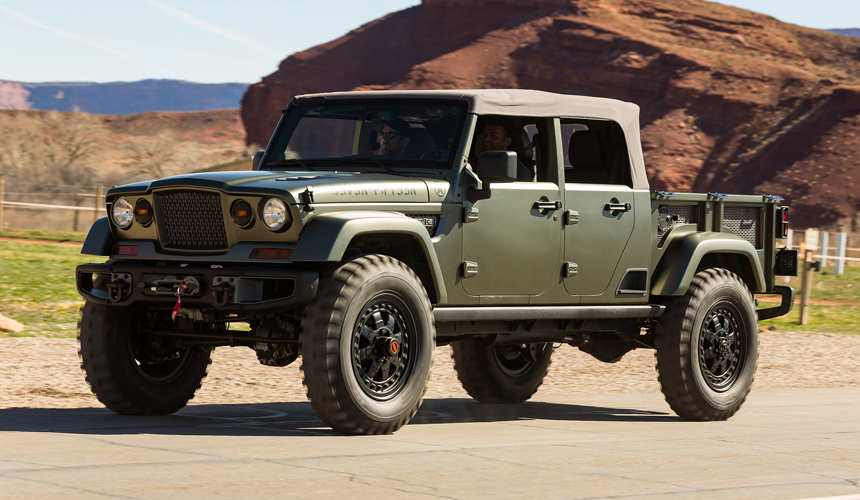
2016: Jeep Crew Chief 715

Untill 2012 when the Mopar division unveiled an official JK-8 kit for converting the long-wheelbase Wrangler into a pickup truck and after installation, the factory warranty remained intact.

JK-8 kit

Jeep Wrangler JK-8 kit
Finally, the wait is over, with the highly anticipated premiere of the Jeep Gladiator set to take place at the Los Angeles Auto Show in late November. This marks the brand’s triumphant return to the pickup truck segment, offering a full two-row cabin for the first time in its production history.

Photo: autowp.ru | Jeep
This is a translation. You can read an original article here: Гладиаторы и Команчи: история пикапов марки Jeep

Published April 04, 2024 • 7m to read

